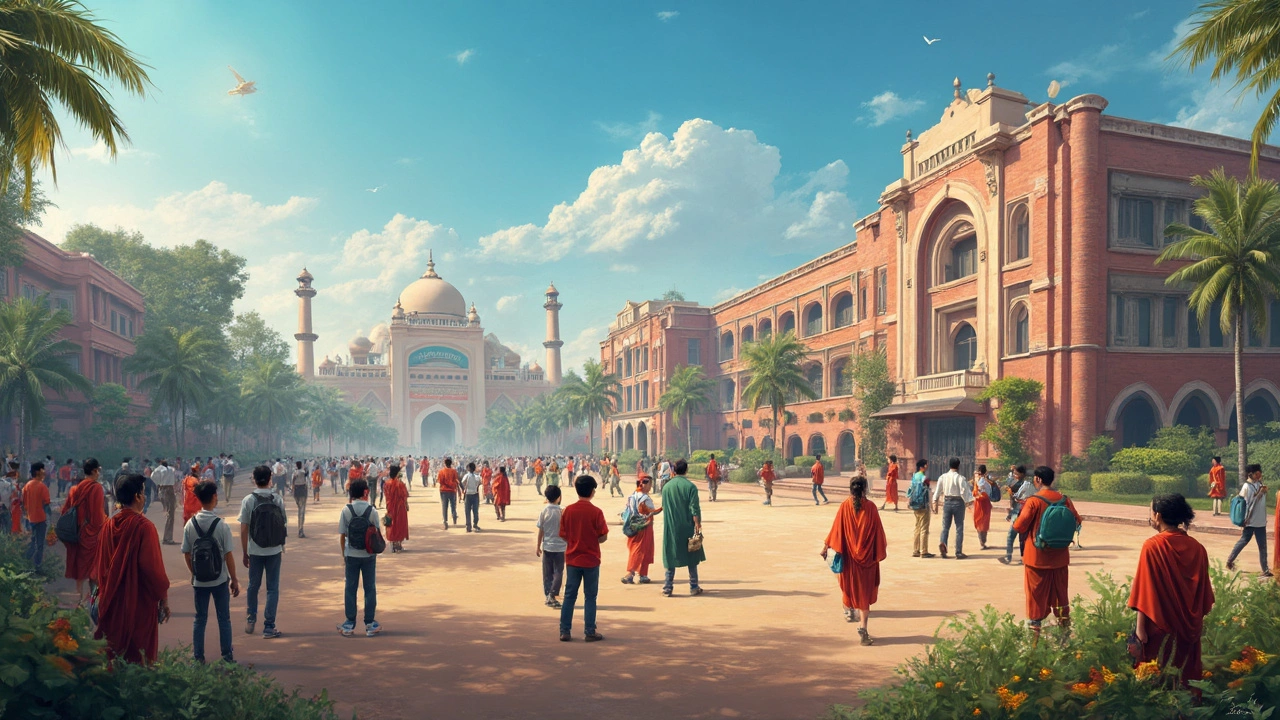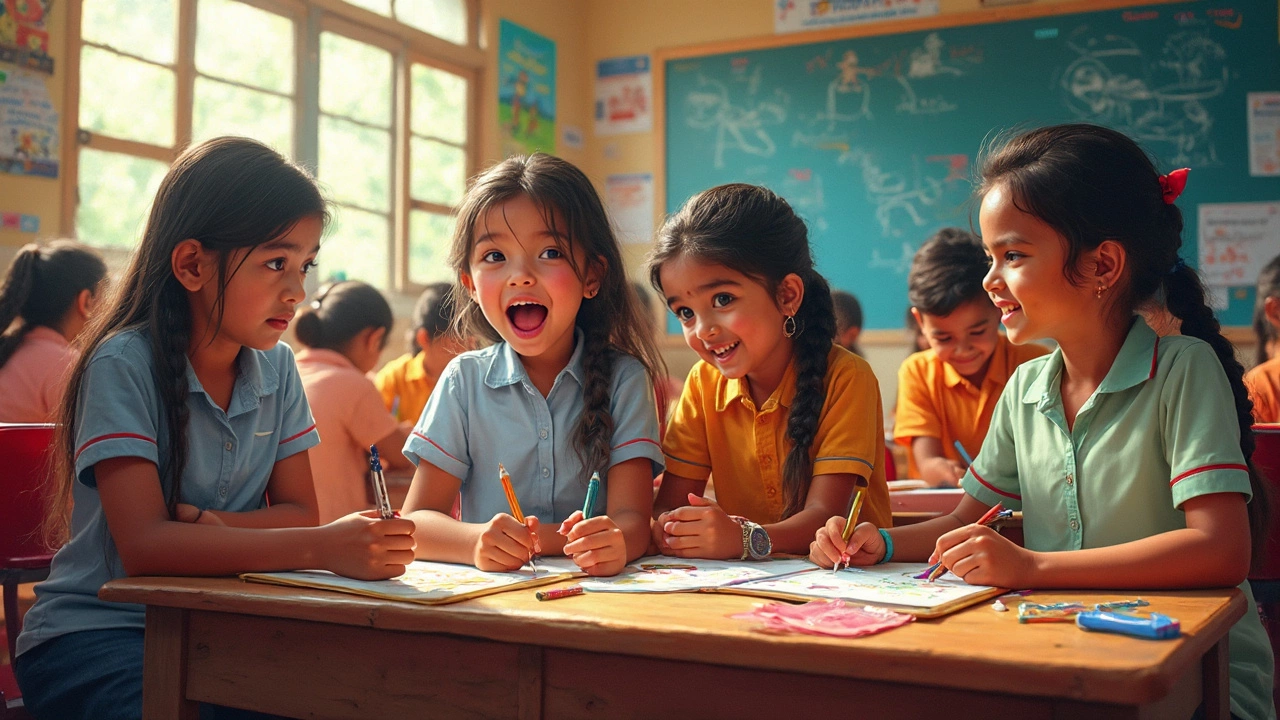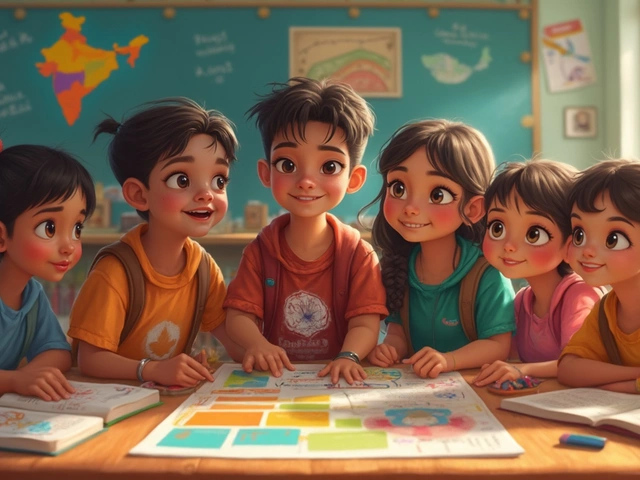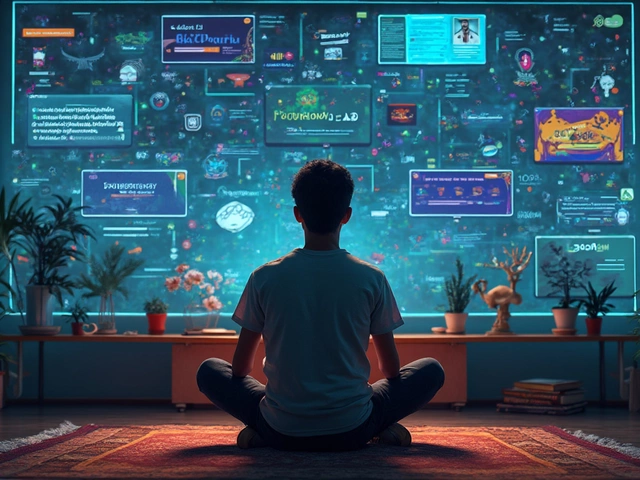When we talk about the most educated countries in the world, India's name often pops up. Why? Well, India has one of the largest educational systems globally. It's like this elaborate puzzle made up of countless schools, teachers, students, and syllabi, including the ever-popular CBSE (Central Board of Secondary Education).
But is India really at the top when it comes to education? To get to the heart of this question, we need to look at several things. First, how well does the CBSE syllabus, which millions of students follow, stack up against global education standards? Do Indian students truly get an education that compares to, or even surpasses, that of other countries?
Studying in India isn't just a classroom affair—it's an experience peppered with unique challenges and opportunities. From mega urban schools to single-room village centers, the variety is vast. While this offers plenty of choices, it also brings up issues like quality consistency and resource availability. But, let's not forget, India is also home to some cutting-edge educational innovations and success stories, which are admired worldwide.
- India's Education Landscape
- The Role of CBSE Syllabus
- Comparing Global Education Standards
- Challenges in the Indian System
- Strengths and Innovations
- Looking Ahead
India's Education Landscape
Diving into India's vast educational scene is like unfolding a massive map, loaded with different paths and destinations. With over 1.5 million schools and 250 million students, India's educational system is among the largest in the world. Despite the size, the system is held together by frameworks like the CBSE syllabus which guides a significant portion of students.
Why is this such a big deal? Well, the CBSE isn't just another curriculum—it's a trendsetter. Around 25,000 schools in India follow this syllabus. It has evolved over the years, aiming to blend rigorous academic standards with student-centric learning approaches. This balance is crucial as it helps students not only grasp standard subjects but also develop critical thinking and analytical skills.
Education in India is structured like a pyramid. It starts with elementary education, moves up to secondary, and then higher secondary education. After that, students can leap into higher education, where universities and colleges take over. The flexibility here is pretty cool, as students can pick from diverse streams like science, commerce, humanities, and more specialized fields.
But, of course, challenges exist. There's a big gap between urban and rural education quality. In cities, resources are aplenty, while rural areas sometimes struggle with basic facilities. Yet, the government is on it, trying to bridge these gaps through initiatives like the Right to Education Act, aiming to provide free and compulsory education for children aged 6 to 14.
A tip: to really get a feel of the education landscape in India, consider both the grassroots level changes and high-level policies. Understanding both gives a fuller picture of where India stands and where it's headed in its educational journey.
The Role of CBSE Syllabus
The CBSE syllabus plays a huge role in shaping the educational journey of countless Indian students. Established in 1962, CBSE is one of the most trusted boards in India, always ensuring a standard curriculum across the nation. Ever since, it’s been this guiding star for schools, aiming to equip students with the skills they need for college and beyond.
Why is CBSE so influential? It's pretty straightforward. First off, CBSE focuses on holistic education, meaning it’s not just about books and exams. It's about developing well-rounded individuals. And with its continuous updates to the curriculum to stay relevant, it’s never been stagnating.
A key feature of the CBSE syllabus is its emphasis on science and math, supporting India’s strong showing in tech and engineering fields globally. But it isn’t just about hardcore subjects. CBSE also values languages, arts, and physical education, offering a balanced approach
"The CBSE system is designed to not only educate but also inspire students to think critically and creatively," says educationalist Dr. Ramesh Prakash.
But there’s more than just what’s in the textbooks. CBSE’s assessment structure is organized to reduce stress, with plenty of room for creative and analytical thinking. This structure encourages students to not just memorize, but really understand what they're learning. The board has also recently introduced competency-based questions, aiming to foster real-world skills.
The flexibility CBSE offers, with options like vocational courses, means students can pursue their passions while also covering important basics. Offering choice is a big win, as it helps students stay engaged and interested in what they're studying.
In terms of stats, over 21 million students appeared for CBSE exams in 2024 alone, showcasing just how far-reaching its impact is. It's clearly doing something right, helping India build a reputation for cultivating serious educational heavyweights.
Of course, the CBSE isn't perfect. Critics point out the pressure of board exams and the cutthroat competition. But for many, its balanced focus and regular updates make it a preferred choice for quality education in India.
Comparing Global Education Standards
How does India stack up against the rest of the world in terms of education? Well, it's a mixed bag. On the one hand, India has a vast and diverse system, with the CBSE syllabus being a key player. On the other, challenges like uneven quality and resources persist.
In terms of pure numbers, India ranks pretty high when you look at enrollment figures. With millions of kids in school, the system covers an impressive range of subjects. But it's not just about getting kids to school. It's about how well they're learning. This is where the comparison gets interesting.
International assessments like PISA (Programme for International Student Assessment) are often mentioned when discussing global rankings. India occasionally participates, and the results show there's room for improvement. India's performance has been below the OECD average, especially in critical thinking and problem-solving skills.
But it’s not all gloomy. India excels in producing top-notch professionals. Just look at Indian-origin CEOs leading global giants. This success is partly due to the country's strong emphasis on math and science fundamentals right from the school level.
Another thing worth mentioning is that India's higher education system is vast and growing. Indian Institutes of Technology (IITs) and Indian Institutes of Management (IIMs) are recognized worldwide for their excellence and rigor.
So, where does this leave us? India isn't quite the most educated country yet, but it’s making strides. There's a solid foundation with the CBSE syllabus and other boards, but to climb higher on global rankings, focusing on quality and modern teaching methods will be key.

Challenges in the Indian System
Okay, let’s talk about some of the hurdles that the Indian education system faces. One of the biggest challenges is inequality. In India, there’s a noticeable gap between urban and rural schools. In cities, there are schools with smart classrooms and updated resources. But in many rural areas, schools struggle with basic facilities like proper buildings, enough teachers, and textbooks.
Another issue is the overcrowded classrooms. Imagine trying to study in a class with 50 other kids! Teachers can’t give individual attention to students, which can affect learning outcomes. More kids per teacher means less chance of personalized help and more stress on teaching staff.
Then, there’s the focus on rote learning. The CBSE syllabus, a key part of India's education system, sometimes encourages memorization rather than understanding concepts. This approach might help in scoring marks in exams but doesn’t necessarily promote critical thinking or problem-solving skills.
We also have to look at the intense academic pressure on students. High competition and societal expectations can lead to stress and mental health issues among students. Often, kids feel they have to top the class to be successful, putting immense pressure on their shoulders.
Access to quality education is another challenge. While top-tier educational institutions exist, they often come with high fees, making them accessible mostly to wealthier families. This gap can prevent talented students from less privileged backgrounds from reaching their potential.
Let's not forget outdated curriculums. In many cases, what students learn is not always aligned with the skills needed in today’s job market. Updating the curriculum to include practical skills like coding, financial literacy, and critical thinking could make a big difference.
| Challenge | Description |
|---|---|
| Inequality between Urban and Rural | Varied access to resources and quality education |
| Overcrowded Classrooms | High student-to-teacher ratios limit individual attention |
| Rote Learning Focus | Emphasis on memorization over understanding |
Addressing these challenges is key if India aims to stand out as the most educated country. There's a lot of potential here, and solving these issues could unlock it.
Strengths and Innovations
India isn't just a hub of culture and history; it's a force to be reckoned with in the world of education. The sheer size and scope of its educational system contribute to its strengths, allowing it to produce a diverse pool of talent. The CBSE syllabus plays a pivotal role here, offering a well-rounded curriculum that emphasizes not just academics but co-curricular activities too.
One of the most significant strengths of India's education is its adaptability. Education isn't one-size-fits-all, right? The system understands this, offering different boards like CBSE, ICSE, and state boards to cater to varied needs and preferences. This flexibility is powerful, letting parents and students choose what's right for them.
Now, let's talk about innovations! India is doing some cool stuff in education. Online education platforms have taken off in a big way. Ever heard of BYJU'S or Unacademy? These startups are transforming how students learn, making quality education more accessible, especially in remote areas. With online tutorials and interactive content, students can grasp complex concepts more easily.
India also excels in STEM (Science, Technology, Engineering, and Mathematics) education. With the success of techies from IITs and NITs in global markets, the country is gaining worldwide recognition. These institutions are known for their rigorous programs and have been instrumental in feeding top talent into the tech world. In fact, several CEOs of global tech giants hail from India.
Moreover, there's an increase in government and private initiatives backing education. The New Education Policy 2020 is another leap forward, focusing on reducing the curriculum load while boosting skills and critical thinking. It aims to revamp the school and college system like never before, giving students more freedom to explore their passions.
- Introduction of vocational courses for varied skill development.
- Use of AI and tech in personalized learning.
- Focus on bilingual teaching to enhance understanding.
These innovations, combined with a robust educational framework, paint a promising picture for India as a leader in global education. So, when you think of countries making waves in education, remember, India is not just competing; it's rocking the boat in its own unique, impactful way!
Looking Ahead
So, what's next for India on its journey to becoming possibly the most educated country in the world? Well, there's a lot on the horizon. India is already making waves with its New Education Policy 2020 (NEP 2020), which aims to overhaul the current system to align more with international standards. This policy is all about flexibility, reducing the curriculum content, and focusing more on critical thinking and analysis rather than rote learning.
The idea is to make education more practical and engaging, so students actually look forward to school instead of seeing it as just another day of cramming facts. NEP 2020 also places a heavy emphasis on vocational education, ensuring that by 2025, at least 50% of learners get exposed to vocational skills. Imagine combining traditional learning with trades that are hands-on and future-ready—pretty cool, right?
Of course, technology is playing a massive role here too. India is diving headfirst into digital education tools like online classes and e-learning platforms, which makes high-quality education accessible even in the most remote corners. Sure, challenges like digital divide and internet access need work, but hey, progress is progress!
Lastly, the government is focusing on improving teacher training. Because, let's face it, an education system can only be as strong as the people leading the charge in classrooms. With better-trained teachers, we can expect better outcomes and a more vibrant educational landscape.
With these steps, India isn't just aiming high—it's changing the rules of the game. And while the journey to becoming the most educated is ongoing, there's no denying the momentum India has right now. Can't wait to see how this all plays out!



